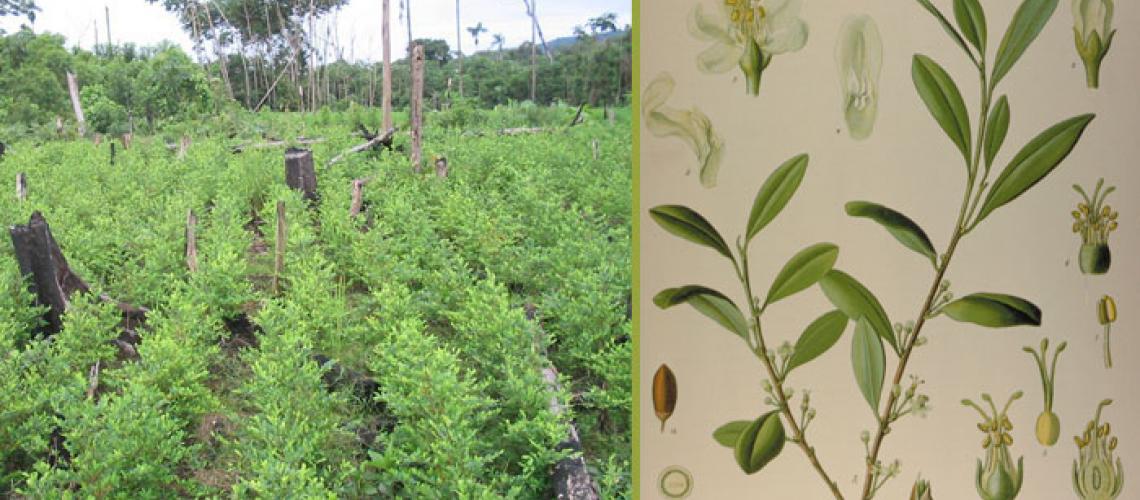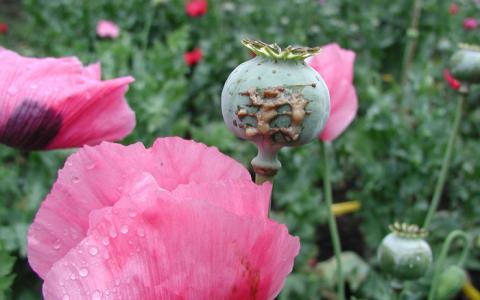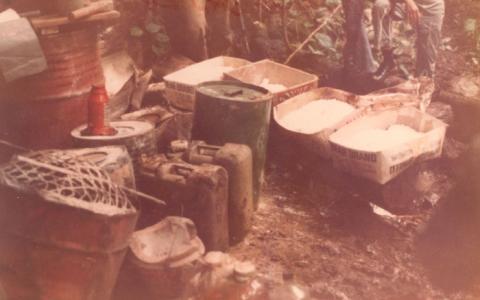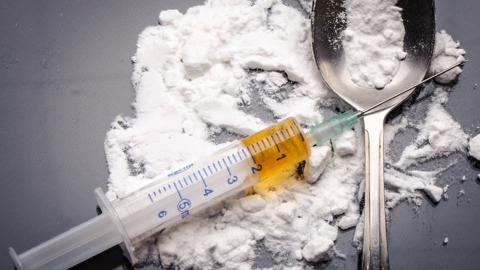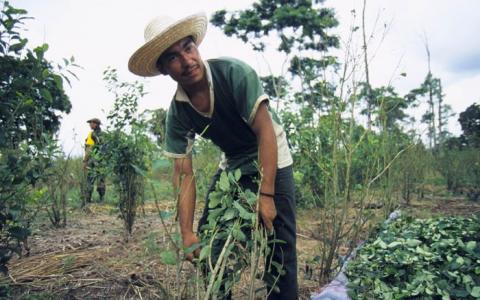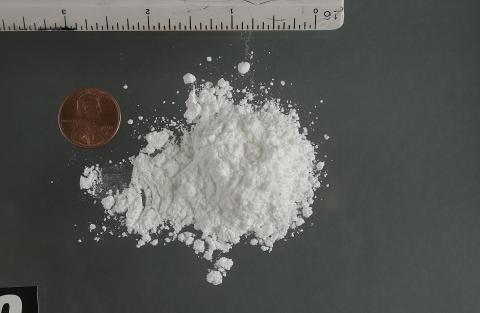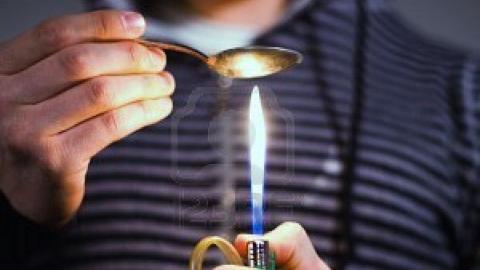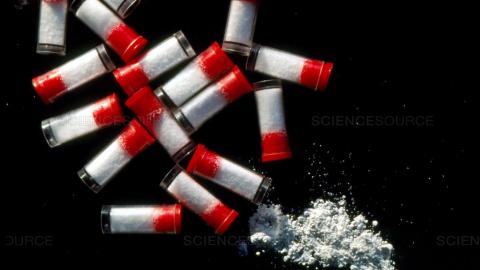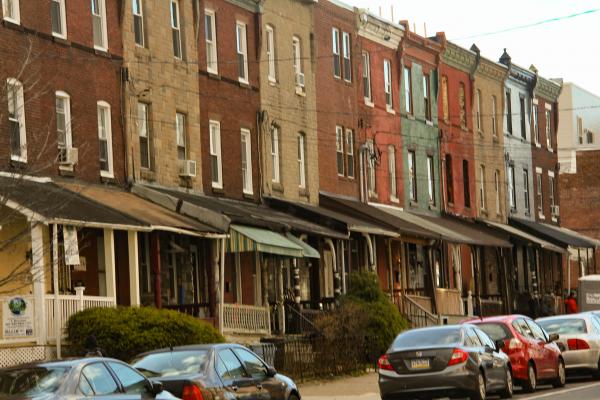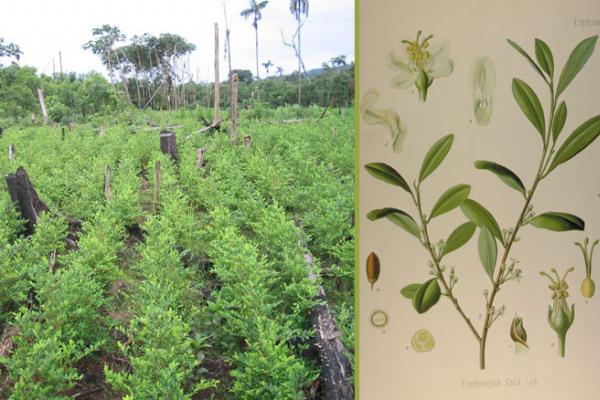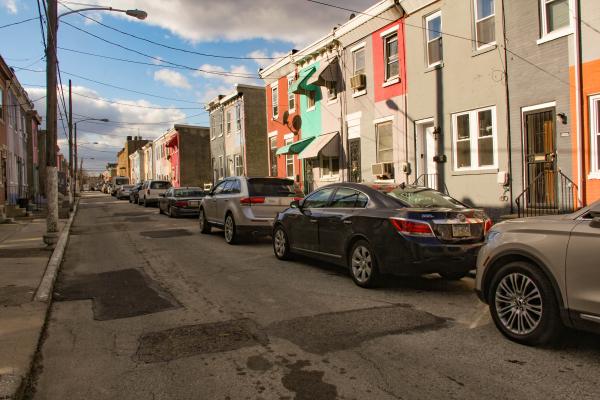An Era of Drug Destruction: From Heroin to Crack Cocaine
Part of
Harsh social conditions made Mantua, a high-poverty African American neighborhood, vulnerable to the devastation of the crack cocaine epidemic of the 1980s and 1990s.
Mantua, a poor neighborhood that was home to many hard-living black families, fell prey to the devastating crack cocaine epidemic of the last two decades of the twentieth century. Drug gangs peddled the highly addictive narcotic openly on Mantua’s streets. The drug market was hierarchically organized, with kingpins who obtained cocaine and other illegal drugs in vast quantities and mid-level distributors who recruited teenagers as street dealers and protected the corners they claimed as their turf.
As we have seen, Mantua experienced the outmigration of middle-income residents who left in search of safer and more prosperous neighborhoods, in part as a response to seriously declining conditions. A comparison of the two census tracts that composed Mantua from 1980 to 1990 suggests the social and economic conditions that made this neighborhood a prime “social setting” for the crack cocaine epidemic of those decades.
Focusing on Mantua, a particularly hard-hit community, illuminates the web of social forces that led to the widespread distribution and consumption of crack, the catastrophic effects of the epidemic, and the response of both government agencies (negative) and local community activists (positive). In the 1980s, Mantua had the tinderbox conditions that made the highly addictive crack a deadly temptation to which many disaffected youths and young adults succumbed all too readily: concentrated poverty, lack of meaningful employment opportunities, education failure, and widespread anomie and despair. Social scientists describe these “new morbidities” as the harmful cumulative effects of flagrant racial inequities in housing, employment, education, and criminal justice; in combination, governmental actions in these social sectors fostered an environment in which crack could thrive.[1] The crack epidemic did not arise in Mantua overnight; as in the city and the nation-at-large, there was a long, slow slide towards crack in this neighborhood. Heroin distribution marked the first phase of this slide.
Heroin loomed large in the cultural imagination of the 1960s. Throughout the decade, this opium-based narcotic was sold with impunity in predominantly African American and Latino neighborhoods of the nation’s inner cities. The early 1960s saw the baby-boom generation reaching adolescence, now composing 9.7 percent of the U.S. population. “Since adolescent males between the ages of fifteen and nineteen were the most prone to experiment with heroin, their swelling number in American society signaled danger,” writes Eric Schneider. Yet the segregation effects of post-Second World War suburbanization, which resulted in middle-class whites leaving major cities for newly spawned suburbs built on a foundation of federally guaranteed mortgage loans (denied to blacks), left African Americans and Latinos stranded in declining, redlined urban neighborhoods, unbuffered (unlike their white suburban counterparts, at least until the 1970s) “from the urban ills of crime and drug abuse.”[2]
Although law enforcement agencies made sporadic attempts to control the drug trade, the federal government and state law enforcement agencies treated this activity as a low-priority problem until the prospect of heroin-addicted GIs returning from the Vietnam War led to policy shifts, including funding methadone clinics to treat addicts. That heroin was already deeply entrenched in cities and poor communities of color was a problem from which the publicity on drug-addled Vietnam veterans tended to divert attention.
In June 1971, President Richard Nixon declared a war on drugs, labeling drug abuse “public enemy number one.”[3] (This “war” would also be waged by the Reagan and Clinton administrations.) New policies were set in motion— policies that curbed the importation of Turkish heroin, established drug testing for returning GIs, and created a network of methadone clinics to treat addicts. Increased federal enforcement and negotiations with other nations reduced the availability of heroin. Drug kingpins saw this slowdown as an opportunity to build a customer base for cocaine, which in the early 1980s arrived in the form of “crack” in poor urban neighborhoods.
How prevalent was heroin addiction in Mantua? That’s hard to say. We learn the following snippets of information from newspaper accounts. In 1969, Philadelphia was home to an estimated 10,000 heroin addicts. In Mantua, the Young Great Society sponsored Mantua Halfway House (428 N. 36th St.); this private facility reported serving some 900 addicts; the program’s director, Dr. K.B. Gosnell, treated them with methadone.[4] While heroin appears to have been a serious problem in the neighborhood, its ramifying effects were nothing of the magnitude of crack cocaine, to which we now turn.
In the early 1980’s, a highly addictive drug called “crack” hit city streets. Crack—cocaine sold in a rock form instead of a powder—was pharmacologically no different than powder cocaine but delivered the drug’s high to the brain faster and more intensely than cocaine taken alone or heroin. “Once you try crack, it is said, you’re always ‘chasing the ghost’—the high that you get the first time is so intense that you can never achieve it again, but the desire to do so is strong enough that you keep pursuing it.”[5]
“Cocaine had long been a rich person’s drug, but this changed as drug entrepreneurs transported cocaine along with heroin from the Caribbean and Latin America into the United States,” writes the social historian Eric Schneider. “Over time rival Colombian cartels produced too much cocaine, and oversupply and competition drove down the price in the American market.” Affordable “across the class structure,” cocaine “became part of American recreational life more than any other illegal drug except for marijuana, reaching a high point in 1980 when nearly 20 percent of eighteen-to-twenty-five-year-olds reported that they had tried cocaine in the previous year.” Occasional recreational snorting of cocaine wasn’t addictive. This wasn’t the case with freebasing, “a volatile process of mixing cocaine with another chemical, usually highly flammable ether, heating it, and then reducing the residue to a crystallized alkaline form,” which, when smoked with a water pipe, “produced . . . a powerful and nearly instantaneous high” if the user didn’t first go up in flames. Enterprising dealers soon discovered a process to “produce a prepackaged form of freebase that delivered the punch without the problem of self-immolation, and did so at a fraction of the cost of powdered cocaine.” They cooked a mixture of cocaine, baking soda, and water. Boiling off the water left “a hard rock-like substance called crack from the sound that it made when heated.” Sold in vials, crack “rocks” could be smoked, with the fumes delivered rapidly into the bloodstream.[6]
Crack was devastatingly addictive. And the behavior of crack addicts was volatile, desperate, and often violent. The crack phenomenon destroyed lives, disrupted families, and undercut traditional values. Addicts turned to crime, often stealing from their own kin, to find the money to “chase the ghost.” From the early 1980s through the 1990s, urban America experienced soaring rates of addiction to this powerfully addictive drug. The hardest-hit cities were in the Northeast and Mid-Atlantic1, specifically the tinderbox areas of concentrated poverty, high unemployment, and easily available guns.
Crack cocaine reached epidemic proportions in Philadelphia between 1989 and 1991, a period that saw some 500 dealers indicted by federal, state, and local authorities. In one notorious example, the organization headed by Antonia Rivera, a North Philadelphia drug kingpin, grossed $3.5 million (netting a $1 million profit)[7] within a twelve-month period, employing youths aged fifteen to seventeen to sell $5 vials of crack. Police Commissioner Willie L. Williams said that “dozens and dozens” of drug blocks existed throughout the city. In March 1992, Williams presided over the demolition of a block of abandoned rowhouses in North Philadelphia’s “Badlands” that were havens for heroin junkies and crack pipers.[8]
The Badlands was the “nerve center” of Philadelphia narcotics trafficking. “The heart of the Badlands [a three-square-mile area] is an outdoor bazaar set in a harrowing stretch of blown-out rowhouses and graffiti-splashed buildings,” the Philadelphia Inquirer reported. “It runs, roughly, from Front Street to Germantown Avenue and from Huntington Street to Allegheny Avenue.” The federal Drug Enforcement Agency (DEA) estimated that drug dealing here (cocaine, crack cocaine, and heroin) yielded a profit of at least $250 million. Overseeing this underground economy were “150 to 200 known drug posses of 10 to 50 people,” which controlled approximately 70 percent of the city’s drug market; about half of the trade involved suburban buyers.[9]
A neighborhood in decline, Mantua was a microcosm of the national crack epidemic. As crack filtered through the American cityscape, news media went into overdrive to portray the drug’s addictiveness and its harmful collateral effects of violence and family breakdown—and, more generally, its tearing of the social fabric of the urban poor. Media stories abounded about “crack babies” (babies with low birth weight born to crack-addicted mothers and abandoned soon after birth), young men driven by crack to kill each other in the streets, and young women turning to sex work to pay for their addiction. Though these reports were for the most part factually accurate in areas where crack was prevalent, they had a harmful racial effect of reinforcing negative stereotypes of poor African American males as inherently dangerous and crack addicts as beyond redemption. Over time, as crack took hold in Mantua, yet another blow to the fictive kinship networks of old heads took place: the distancing of older African Americans from younger generations in the neighborhood. The informal mentorship network was downgraded because the older folks, the “upright role models”, were now fearful of youth, and they withdrew from the public spaces where interpersonal relationship-building had formerly occurred.
As described by Elijah Anderson in his 1990 book Streetwise, the drug hierarchy of “Northton” (Anderson’s pseudonym for Mantua, and perhaps parts of the nearby neighborhoods of Belmont and Mill Creek) displaced the original old heads. “Top dogs,” those at the top of the drug-distribution hierarchy, became the new role models for teenagers in the area—they were the “new old heads.” The “top dogs [were] the guys with the money, dudes with the cars.” Typically in their late thirties, these men made the rules and managed the large-scale importation of cocaine into their domains. They sold large quantities of drugs at a discount to mid-level dealers aged seventeen to late-twenties. The middlemen controlled the street corners where they sometimes sold crack vials directly to users or, more often, recruited teenagers to make the sales; according to one of Anderson’s informants, those at the bottom of the drug hierarchy were “young boys who come out of school and are looking to make some money. They can make $150 a day selling that [expletive].” The middlemen managed the street-level workforce and guarded their territory, often retaliating violently when a corner they claimed was contested by another gang.[10]
Here it’s important to note that the DEA attributed a sizable share of cocaine trafficking to Jamaican gangs called “posses” (a term evoking Wild West lawlessness) that set up shop in many of the nation’s large, medium, and small cities.[11] They were a vicious presence in Philadelphia. To understand the Jamaican involvement, it’s helpful to look at the origins of crack trafficking in the U.S. The Colombia-to-New York City connection was likely the most important point of origin. The Cali Cartel in Colombia controlled the cocaine traffic to New York and other U.S. ports of entry. It was a vast and lethal business: “By the mid-1980’s, cocaine was arriving in New York by the ton.” The primary mid-level distributors for this operation were Dominicans in Washington Heights, and they were the ones who likely solved the dangerous freebase problem to create “rock” cocaine. Following the lead of the Dominican drug peddlers, crack gangs began to form along ethnic lines in Harlem, Brooklyn, Queens, and other areas of the city. By late 1985, only New York, Los Angeles, and Miami, major ports of entry, were disrupted by the crack epidemic. This changed dramatically when illegal, “fearsome” Jamaican immigrants began to move crack cocaine “from these gateway cities into the heartland.” Under the feds’ noses, they shipped the cocaine by Amtrak, Greyhound, commercial airlines, Federal Express, and UPS.[12] (Crack cocaine arrived in Philadelphia in 1985, according to police data and the Drug Awareness Warning Network [DAWN].[13]
These loosely organized gangs—previously outlawed in Jamaica—operated in North, South, and West Philadelphia, where they marketed crack and defended their turf violently; indeed, the Philadelphia police attributed some 30 killings between 1984 and 1988 to Jamaicans.[14] Some of these killings may be traceable to Delroy Edwards, a notorious Jamaican drug kingpin in Brooklyn and head of a posse called Rankers, who expanded his operation to Philadelphia, Washington, and Baltimore, supplying local dealers in these cities with the cocaine they turned into crack for street distribution. Edwards, a “pathologically violent” individual whose ominous nickname was “Uzi,” was known to deal murderously with anyone who crossed him.[15]
In one high-profile 1989 trial, a federal judge sentenced two Jamaican posse leaders to life imprisonment without parole for operating a multimillion-dollar drug racket from 1985 to 1988; their gang, called the Smith Narcotic Organization, “sold millions of dollars’ worth of crack, cocaine and marijuana from street corners and drug houses in North and West Philadelphia.”[16] (Anderson’s study makes no mention of a Jamaican influence in Northton.) The street-level dealing in Northton was often blatantly public, with sellers peddling crack in broad daylight to “a stream of customers arriving by car and on foot.”[17]
The drug hierarchy in North Philadelphia resembled the structure of narcotics trafficking in Mantua and other West Philadelphia neighborhoods. For example, a middleman in the Badlands identified as Junior managed drugs for his posse’s supplier, a kingpin known as “The Big Man.” Junior controlled a corner in West Kensington where his juvenile street dealers returned $8 to him for every $10 bag of cocaine they sold. “Look at these guys,” Junior told a reporter. “They grew up in the drug scene. It’s all they know. There’s no decent schooling up here and no jobs for them. They know dealing’s the only thing that’s going to get them anywhere.”[18] Testimony to the ubiquity and seriousness of the city’s drug crisis was the sheer volume of petty-cash deals that culminated in vast profits for drug kingpins. As the Inquirer reported from the Badlands, “Many corners are divided into four distinct retail outlets: crack cocaine at $5 a vial; heroin in $10 and $20 bags; power cocaine in ‘dime’ ($10) and ’25-cent’ ($25) bags; and cocaine ‘in weight’ or wholesale amounts of a half-ounce or more.”[19] A thriving “service industry” profited from the human misery spawned by the crisis: operators of shooting galleries and crack houses, suppliers of hypodermic syringes and homemade crack pipes.[20] Perhaps the most lucrative enterprise in this service industry was the crack-vial business. Taiwan was the major international supplier of vials, with a retail price on U.S. streets “as high as 10 cents a vial, or $10 per 100 vials.” Vials were first reported on the streets in North and West Philadelphia in 1986 and 1987, respectively.[21]
In his 1993 book On the Edge, an ethnography of poor black youth in a Southwest Philadelphia neighborhood at the height of the crack epidemic, Carl Nightingale noted “drug dealers passing by in souped-up Mercedes” and described one of his informants, 11-year-old Chauntey, as “waiting for the corner pay phone to ring with orders for cocaine deliveries.” (The date was August 1988.) “According to wide-eyed and breathless reports from other kids,” writes Nightingale, “[Chauntey] either was caught selling drugs or he stabbed someone in the stomach, or worse” (Chauntey was sentenced to the Youth Study Center and reform school).[22] Drug money enabled black youth purchases of two status symbols: gold jewelry and expensive sneakers. Savvy marketers, no doubt recognizing the potential of the crack epidemic for new lines of profit, targeted young black males, to the extent that teen-aged crack dealers in West Philadelphia, New York City, and a multitude of other cities were readily identifiable by what they wore; as the New York Times put it: “beepers, four-finger gold rings and $95 Nikes.”[23]
Crack played a prominent role in the spiking national homicide rate between 1985 and 1991, with drive-by shootings committed by rival drug gangs becoming a staple of city streets. And a staggering number of the perpetrators and victims were teenagers (the adolescent homicide rate doubled in these years).[24] In 1995, then Penn professor John Dilulio described the rise of the “juvenile super-predator,” a term Dilulio coined to describe a generation of “severely morally impoverished youth” coming of age in the crack era, street youth possessed of a “violent hair-trigger mentality,” “perfectly capable of committing the most heinous acts of physical violence for the most trivial reasons (for example, a perception of slight disrespect or the accident of being in their path).”[25] Suffice it to say, terms such as “super-predators” and “wolf packs” were part of the national discourse about the “drug culture.”
While preppy, un-streetwise University of Pennsylvania students were especially vulnerable targets for late-night teen marauders, in two cases fatally, most crack-era violence was black-on-black crime. For example, as Penn’s president Sheldon Hackney painfully noted in his personal journal: “Last Saturday [1 September 1990] four black teenagers were gunned down as they sat in their car at midnight at 40th & Sansom, near the busy corner of 40th & Walnut where Lucy and I were just minutes after the shooting. Two died & two are in the hospital.”[26]
Nearly a decade after Streetwise, Anderson extended his analysis of the “culture of the street” from north of Market Street to Southwest Philadelphia in a book titled Code of the Street. The street culture he described exhibited the same characteristics in most poor African American neighborhoods west of the Schuylkill River. Yet his analysis belies the stereotype of inner-city African American life and values as a “culture of pathology.” Code of the Streets highlights the struggles of a legion of striving “decent” (Anderson’s term) adults and “code switching” youths (high achievers in school who, as a matter of survival, projected a “street” persona to drug-dealing peers outside school.)
And Anderson reminds us that underlying the crack-era street culture of West and Southwest Philadelphia were social conditions that bore the marks of profound racial discrimination—what sociologists call “structural” factors. “It must be continually underscored,” writes Anderson, “that much of this violence and drug activity is a reflection of the dislocations brought about by economic transformations, shifts that are occurring in the context of the new global economy. . . . [Where] the wider economy is not receptive to these dislocated people, the underground economy is. That does not mean that anyone without a job is suddenly going to become a drug dealer; the process is not that simple. But the facts of race relations, unemployment, dislocation, and destitution create alienation, and alienation allows for a certain receptivity to overtures made by people seeking youthful new recruits for the drug trade.”[27]
With a full-blown drug crisis on their hands, city and local officials nationwide had little time or inclination for addressing underlying causes. The mobilization against crack was punitive and not rehabilitative—and it targeted poverty-stricken African Americans. As the historian Michelle Alexander notes in The New Jim Crow, the Reagan and Clinton administrations promoted and escalated the War on Drugs as a means of leveraging the support of white working-class voters alienated by the gains of the Civil Rights Movement—a war waged in race-neutral terms.[28] With a focus on policing and punishment, the reality of the tortured lives of crack addicts was off the federal radar screen. After the passage of the Clinton administration’s Violent Crime Control and Law Enforcement Act of 1994, also known as the Crime Bill, penalties for drug possession were stiffened in the form of highly punitive mandatory minimum sentences. According to the Justice Policy Institute, “the Clinton Administration’s ‘tough on crime’ policies resulted in the largest increases in federal and state prison inmates of any president in American history.”[29] Cities across the nation hired more police officers “on the premise that one of the ways that you stop crime is you put more cops on the street.”[30]
The penalties for possession of powder cocaine, a narcotic used predominantly by white people, were far less severe than the penalties for possession of rock cocaine, or crack, a narcotic used predominantly by poor minorities. Black users of crack were subjected to extreme penalties, according to a 1995 report by the U.S. Sentencing Commission.[31] The striking inequality of law enforcement in the crack-cocaine era is summed up in the “1-to-100 rule,” i.e. a person would have to have 100 grams of powder cocaine in their possession to receive the same mandatory minimum sentence as someone possessing just one gram of crack.[32] In sum, federal, state, and city actions to make criminalization rather than rehabilitation the strategy for solving the crack crisis resulted in the mass—and in many cases long-term—incarceration of African American males.
[1] For an extensive yet readable analysis of the role of discriminatory housing and zoning policies in fostering the residential segregation that “ghettoized” neighborhoods like Mantua, see Richard Rothstein, The Color of Law: A Forgotten History of How Our Government Segregated America (New York: Liveright, 2017).
[2] Eric C. Schneider, Smack: Heroin and the American City (Philadelphia: University of Pennsylvania Press, 2008), 98–99.
[3] “Richard Nixon, “Special Message to the Congress on Drug Abuse Prevention and Control,” June 1971, The American Presidency Project, http://www.presidency.ucsb.edu/ws/?pid=3048
[4] Patricia McBroom, “The Truth about Drugs: The ProblemPhiladelphia Inquirer Magazine, 7 September 1969; “Army Call-Up of Doctor May Deprive 200 Addicts of Treatment,” Philadelphia Inquirer, 11 July 1971; “Methadone: Addicts’ Cure or Curse?” Philadelphia Inquirer, 26 September 1971.
[5] Elijah Anderson, Code of the Street: Decency, Violence, and the Moral Life of the Inner City (New York: Norton, 1999), 121.
[6] Schneider, Smack, 192–194. See also James Forman Jr., Locking Up Our Own: Crime and Punishment in Black America (New York: Farrar, Straus and Giroux, 2017), 158.
[7] “13 Indicted in N. Phila. Drug Case,” Philadelphia Inquirer, 24 May 1991.
[8] “Razing the Ruins That Heroin Built on the Edge of the Badlands is Stella Street . . .”, Philadelphia Inquirer, 13 March 1992.
[9] “How an Illicit World Flourishes Just Three Miles from City Hall . . .,” Philadelphia Inquirer, 5 April 1992. Crack entered this market in 1986.
[10] Elijah Anderson, Streetwise: Race, Class, and Change in an Urban Community (Chicago: University of Chicago Press, 1990), 81–82.
[11] “Jamaican Gangs Thriving in U.S. Cities,” New York Times, 19 July 1987; “Jamaican ‘Posses” Pose a New Threat,” Philadelphia Tribune, 8 July 1988; “Jamaicans—New Faces in U.S. Crime,” Los Angeles Times, 3 January 1989.
[12] “Crack’s Destructive Spring Across America,” New York Times, 1 October 1989.
[13] Jeff Grogger and Michael Willis, “The Emergence of Crack Cocaine and the Rise in Urban Crime Rates,” Review of Economics and Statistics 82, no. 4 (2000), 519–529.
[14] “Hundreds Arrested in Drug Probe,” Philadelphia Inquirer, 14 October 1988; “From Kingston to Crack,” Philadelphia Inquirer, 20 August 1989.
[15] “Crack’s Destructive Spring Across America,” New York Times, 1 October 1989.
[16] “Drug Task Force Gains Indictment of 23 as Suspects in Jamaican Ring,” Philadelphia Inquirer, 9 December 1988; “2 Drug Kingpins Are Sentenced to Life in Prison,” Philadelphia Inquirer, 7 October 1989.
[17] “In a W. Phila. Hotbed of Drug Sales, a Police Raid Results in 10 Arrests,” Philadelphia Inquirer, 19 January 1990. In 1979, Jamaican drug posses surfaced as exceptionally violent drug traffickers in South Florida. As crack cocaine gained traction in U.S. drug markets in the mid-1980s, Jamaicans began a killing spree, as many as 3,500 homicides between 1985 and 1992, that gave them control of crack networks all along the eastern seaboard. “Jamaican Drug Gangs’ Brutal Rule,” Philadelphia Inquirer, 23 August 1992.
[18] “How a Posse Runs a Corner . . .,” Philadelphia Inquirer, 9 April 1992.
[19] “How an Illicit World Flourishes Just Three Miles from City Hall . . . ,” Philadelphia Inquirer, 5 April 1992.
[20] “How Small Operators Cash in on the Big Miseries of Drugs . . .,” Philadelphia Inquirer, 7 April 1992.
[21] “Big Bucks from Vial Business . . .,” Philadelphia Inquirer, 31 May 1992.
[22] Carl H. Nightingale, On the Edge: A History of Poor Black Children and Their American Dreams (New York: Basic, 1993), 34–35.
[23] “Crack’s Destructive Spring Across America,” New York Times, 1 October 1989; see also Nightingale, On the Edge, 141–142.
[24] “The American Way of Murder,” Washington Post, 19 June 1994.
[25] John Dilulio, “The Coming of the Super-Predators,” Weekly Standard, 27 November 1995, https://www.weeklystandard.com/john-j-dilulio-jr/the-coming-of-the-super-predators.
[26] Puckett and Lloyd, Becoming Penn, 183; for murders of Penn members during the crack epidemic, see pp. 184, 251–254.
[27] Anderson, Code of the Street, 120.
[28] Michelle Alexander, The New Jim Crow: Mass Incarceration in the Age of Colorblindness, rev. ed. (New York: New Press, 2012), 49–58. See also Forman Jr, Locking Up Our Own, 151–215.
[29] Quoted in Alexander, New Jim Crow, 36.
[30] “W. Philly residents seek ways to benefit from crime bill,” Philadelphia Tribune, 7 October 1994.
[31] "Study: Drug Policies Target Blacks; New National Study Says Federal Drug Laws Target Minorities," Philadelphia Tribune, 26 May 1995. See also “Crack and Consequences,” commentary, Philadelphia Inquirer, 2 September 1995.
